|
Books Should Be Free Loyal Books Free Public Domain Audiobooks & eBook Downloads |
|
|
Books Should Be Free Loyal Books Free Public Domain Audiobooks & eBook Downloads |
|
Fiction |
|---|
|
Book type:
Sort by:
View by:
|
By: David Graham Phillips (1867-1911) | |
|---|---|
 The Conflict
The Conflict
| |
By: David Henry Keller (1880-1966) | |
|---|---|
 The Rat Racket
The Rat Racket
| |
By: David James Burrell (1844-1926) | |
|---|---|
 The Centurion's Story
The Centurion's Story
| |
By: David Lindsay (1876-1945) | |
|---|---|
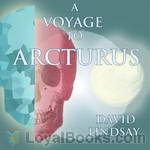 A Voyage to Arcturus
A Voyage to Arcturus
A Voyage to Arcturus is a novel by Scottish writer David Lindsay, first published in 1920. It combines fantasy, philosophy, and science fiction in an exploration of the nature of good and evil and their relationship with existence. It has been described by critic and philosopher Colin Wilson as the "greatest novel of the twentieth century" and was a central influence on C. S. Lewis's Space Trilogy. | |
By: David Whitelaw | |
|---|---|
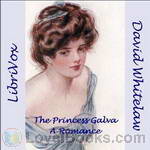 The Princess Galva
The Princess Galva
Edward Povey had been a correspondence clerk for twenty-two years when he was summarily dismissed. So how did he find himself mixed up with an orphan girl, who was really a princess, as she sought to reclaim her throne from the man who had killed her parents? Well, however it had happened, it was romantic. And after two decades in the basement office of a shipping company, he was ready for a bit of romance. (Introduction by MaryAnn) | |
By: Day Kellogg Lee (1816-1869) | |
|---|---|
 Summerfield or, Life on a Farm
Summerfield or, Life on a Farm
| |
By: Dillon Wallace (1863-1939) | |
|---|---|
 The Gaunt Gray Wolf A Tale of Adventure With Ungava Bob
The Gaunt Gray Wolf A Tale of Adventure With Ungava Bob
| |
 Ungava Bob A Winter's Tale
Ungava Bob A Winter's Tale
| |
 Left on the Labrador A Tale of Adventure Down North
Left on the Labrador A Tale of Adventure Down North
| |
By: Dinah Craik (1826-1887) | |
|---|---|
 John Halifax, Gentleman
John Halifax, Gentleman
This novel, published in 1856, was one of the popular and beloved novels in the Victorian era. It is told in the first person by Phineas Fletcher, an invalid son of a Quaker tanner who is presented to us in the beginning as a lonely youth. John Halifax, the first friend he ever had, is a poor orphan who is taken in by his father to help in the work which his sickly son can't constantly do. Phineas tells us in an unforgettable way how John succeeded in rising from his humble beginning and become a wealthy and successful man. But with the money come horrible troubles... In an unforgettable manner, we learn to know all the characters of the novel as if they really lived. | |
By: Dinah Maria Craik (1826-1887) | |
|---|---|
 Olive
Olive
Inspired by Jane Eyre, Dinah Maria Craik's 1850 novel, Olive, was one of the first to feature a disabled central character. 'Slightly deformed' from birth, Olive believes that she will never be able to marry like other women, so she devotes her life to her art, her mother, and above all, her religion. It takes a dark secret from the past and a new, fascinating acquaintance, to make her realize what her life could be. | |
By: Dinah Maria Mulock Craik (1826-1887) | |
|---|---|
 Fairy Book
Fairy Book
The sleeping beauty in the wood -- Hop-O'-My-Thumb -- Cinderella; or, the little glass slipper -- Adventures of John Dietrich -- Beauty and the Beast -- Little One Eye, Little Two Eyes, and Little Three Eyes -- Jack the giant-killer -- Tom Thumb -- Rumpelstilzchen -- Fortunatus -- The Bremen Town Musicians -- Riquet with the tuft -- House Island -- Snow-White and Rose-Red -- Jack and the bean-stalk -- Graciosa and Percinet -- The iron stove -- The invisible prince -- The woodcutter's daughter --... | |
 The Adventures of A Brownie As Told to My Child by Miss Mulock
The Adventures of A Brownie As Told to My Child by Miss Mulock
| |
 Agatha's Husband A Novel
Agatha's Husband A Novel
| |
By: Dion Clayton Calthrop (1878-1937) | |
|---|---|
 The Pirate's Pocket Book
The Pirate's Pocket Book
| |
By: Don Marquis (1878-1937) | |
|---|---|
 The Cruise of the Jasper B.
The Cruise of the Jasper B.
| |
 Hermione's Group of Thinkers
Hermione's Group of Thinkers
| |
By: Don Peterson | |
|---|---|
 The White Feather Hex
The White Feather Hex
| |
By: Donald Alexander Mackenzie (1873-1936) | |
|---|---|
 Elves and Heroes
Elves and Heroes
This volume describes, in verse, the mythical creatures and people of ancient Scotland. It also includes explanatory notes about about the characters and folk tales that inspired the author's poetry. (Introduction by Matthew Reece) | |
By: Donald McGibney | |
|---|---|
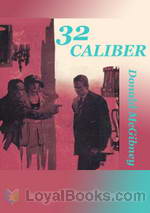 32 Caliber
32 Caliber
The recent interest that's being generated in the pulp fiction writers of the 1920s has lead to many of the books of that genre being resurrected and read once again. For modern-day readers, these represent what are now called “airport-lounge reads” and ideal for those few hours that you have to kill waiting in an airport or railway station, while traveling or on holiday, when you don't want anything too heavy to weigh you down! Pulp fiction, so called because the books were generally printed on cheaper paper made from recycled wood pulp, had certain characteristics... | |
By: Donald Wollheim (1914-1990) | |
|---|---|
 The Secret Of The Ninth Planet
The Secret Of The Ninth Planet
An alien race has put a station on Earth and other planets in order to steal the rays of the sun, possible causing the sun to nova within two years. Burl Denning, a high school student, is the only person who has the power to stop the alien project. Can he and the crew of the experimental space ship Magellan act in time to save the earth? | |
By: Donn Byrne (1889-1928) | |
|---|---|
 Messer Marco Polo
Messer Marco Polo
| |
 The Wind Bloweth
The Wind Bloweth
| |
By: Dornford Yates (1885-1960) | |
|---|---|
 Berry and Co.
Berry and Co.
| |
 The Brother of Daphne
The Brother of Daphne
| |
 Jonah and Co.
Jonah and Co.
| |
By: Dorothy C. Paine | |
|---|---|
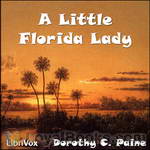 A Little Florida Lady
A Little Florida Lady
This is the story of a little girl from New York who moves with her family to Florida in the late 19th Century. Parental warning: as this book was first published in 1903 and set in the American South, and although the author tries to be open-minded, please be aware that there are slang words used for African Americans. | |
By: Dorothy Canfield Fisher (1879-1958) | |
|---|---|
 The Bent Twig
The Bent Twig
Semi-autobiographical series of incidents in the life of an intellectual American family in the late 19th - early 20th Century as seen by favored daughter, Sylvia Marshall. Her father is an economics professor in a Midwestern state university and she is following in his inquisitive footsteps. Canfield writes this in a matter-of-fact manner with Tarkingtonesque good humor. | |
 The Squirrel-Cage
The Squirrel-Cage
| |
By: Dorothy Kilner (1755-1836) | |
|---|---|
 Life and Perambulations of a Mouse
Life and Perambulations of a Mouse
| |
By: Dorothy Richardson (1873-1957) | |
|---|---|
 Pointed Roofs
Pointed Roofs
Miriam Henderson is one of what novelist Dolf Wyllarde (in her great work, The Pathway of the Pioneer) termed "nous autres," i.e., young gentlewomen who must venture forth and earn their living after their fathers have been financially ruined. Also, she has read Villette; she thus applies for and is offered a job teaching conversational English at a girls' school, albeit in Germany rather than France. Pointed Roofs describes her year abroad, as she endeavors to make her way in the hotbed of seething female personalities that populate the school, overseen by her employer, the formidable Fraulein... | |
By: Dorothy Whitehill | |
|---|---|
 Phyllis A Twin
Phyllis A Twin
| |
By: Douglas Fairbanks (1883-1939) | |
|---|---|
 Laugh and Live
Laugh and Live
Douglas Fairbanks, Sr. (May 23, 1883 – December 12, 1939) was an American actor, screenwriter, director and producer. He was best known for his swashbuckling roles in silent films such as The Thief of Baghdad, Robin Hood, and The Mark of Zorro. His book, Laugh and Live, is a book about positive virtues and advice for leading a good, healthy, and successful life. An advisory about this book is in order. Published in 1917, it was written at a time when “men went to work, women kept house, and supported their man”... | |
By: Douglas Grant (aka Isabel Ostrander) (1883-1924) | |
|---|---|
 Anything once
Anything once
An unlikely pair of wanderers they were; the orphan girl Lou and her travelling partner Jim Botts. Jim appeared in need of following some apparent 'rules' during the journey, while Lou seemed in need of better clothing, and perhaps some refinement. But who was most benefitting whom on the week-long journey from rural village to big city? And which of the two was willing to try anything once? (Introduction by Roger Melin) | |
By: Douglas William Jerrold (1803-1857) | |
|---|---|
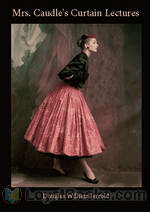 Mrs. Caudle's Curtain Lectures
Mrs. Caudle's Curtain Lectures
First serialized in Punch magazine in 1845, and officially published in book form in 1846, Mrs. Caudle's Curtain Lectures presents a collection of 37 lectures delivered by Mrs. Caudle to her husband as a means of reproach for his trivial infractions. Also, the author marvelously incorporates typical elements responsible for disagreements between spouses including the antipathetic mother-in-law, the ne’er-do-well friends, and the jealous outbursts. Jerrold’s charming piece of satire introduces the Victorian married couple, Mr... | |
By: E. (Eliza) Fenwick (1766-1840) | |
|---|---|
 The Bad Family & Other Stories
The Bad Family & Other Stories
| |
By: E. (Emanuel) Haldeman-Julius (1888-1951) | |
|---|---|
 Dust
Dust
| |
By: E. A. Gillie | |
|---|---|
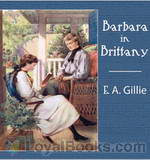 Barbara in Brittany
Barbara in Brittany
Barbara, an English girl and the eldest of her family, spends most days helping her widowed mother care for her younger siblings. Then disaster strikes – or so the children believe! Barbara is taken to France to see Paris by her father’s formidable sister, Aunt Anne. She stays on in Brittany to perfect her French. In this series of funny stories about her adventures in France, we meet a cast of recurring characters – and both Barbara and Aunt Anne find love! (Summary by Sibella Denton) | |
By: E. C. (Edmund Clerihew) Bentley (1875-1956) | |
|---|---|
 Trent's Last Case
Trent's Last Case
| |
By: E. Cherubini | |
|---|---|
 Pinocchio in Africa
Pinocchio in Africa
| |
By: E. E. Boyd | |
|---|---|
 'Our Guy' or, The elder brother
'Our Guy' or, The elder brother
| |
By: E. E. Smith (1895-1965) | |
|---|---|
 Spacehounds of IPC
Spacehounds of IPC
When the Inter-Planetary Corporation's (IPC) crack liner “IPV Arcturus” took off on a routine flight to Mars, it turned out to be the beginning of a unexpected and long voyage. There had been too many reports of errors in ship's flight positions from the Check Stations and brilliant physicist Dr. Percival (“Steve”) Stevens is aboard the Arcturus on a fact-finding mission to find out what's really happening, and hopefully save the honor of the brave pilots of the space-liner Arcturus from the desk-jockeys' in the Check Stations implications of imprecision - the nastiest insult you could cast at a ships pilot... | |
 Skylark Three
Skylark Three
This is a sequel to The Skylark of Space. The novel concerns Richard Seaton and his allies who have encounters with aliens while fighting DuQuesne and the Fenachrone.. | |
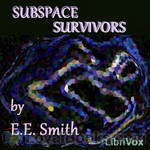 Subspace Survivors
Subspace Survivors
A team of space travelers are caught in a subspace accident which, up to now, no one has ever survived. But some of the survivors of the Procyon are not ordinary travelers. Their psi abilities allow them to see things before they happen. But will it be enough?Smith's story "Subspace Survivors" first appeared in the July 1960 issue of the magazine Astounding. | |
 Galaxy Primes
Galaxy Primes
They were four of the greatest minds in the Universe: Two men, two women, lost in an experimental spaceship billions of parsecs from home. And as they mentally charted the Cosmos to find their way back to earth, their own loves and hates were as startling as the worlds they encountered. | |
By: E. E. “Doc” Smith (1890-1965) | |
|---|---|
 Triplanetary, First in the Lensman Series
Triplanetary, First in the Lensman Series
Triplanetary was first serialized in Amazing Stories in 1934. After the Lensman series became popular, Smith took his Triplanetary story and turned it into the first of the Lensman series, using it as a prequel to give the back story for the protaganists in the Lensmen series. He added 6 new chapters, doubling it in size and it's really a different book from the serialized novel, being published 14 years after the first. It was put into Gutenberg just last year. The novel covers several episodes in an eons-long eugenics project of the super-intelligences of the Arisia... | |
By: E. F. Benson (1867-1940) | |
|---|---|
 Dodo's Daughter
Dodo's Daughter
The second in the "Dodo" sequence of novels. | |
By: E. Frances (Eleanor Frances) Poynter | |
|---|---|
 My Little Lady
My Little Lady
| |
By: E. Gallienne Robin | |
|---|---|
 Where Deep Seas Moan
Where Deep Seas Moan
| |
By: E. H. (Emily Hilda) Young (1880-1949) | |
|---|---|
 Moor Fires
Moor Fires
| |
By: E. J. (Edith J.) May | |
|---|---|
 Louis' School Days A Story for Boys
Louis' School Days A Story for Boys
| |
By: E. M. Delafield (1890-1943) | |
|---|---|
 Consequences
Consequences
Set in late Victorian England, “Consequences” follows the life of Alexandra Clare, a girl born into an upper class Catholic London family. Raised from birth for the privileged life of a wife and mother, Alexandra never quite fits in with her or her family’s expectations and fails at seemingly everything she tries – school, the marriage market, family life. | |
By: E. Oe. (Edith Oenone) Somerville (1858-1949) | |
|---|---|
 Mount Music
Mount Music
| |
By: E. Pauline Johnson (1861-1913) | |
|---|---|
 The Moccasin Maker
The Moccasin Maker
| |
By: E. Phillips | |
|---|---|
 Sweets for Leisure Hours Amusing Tales for Little Readers
Sweets for Leisure Hours Amusing Tales for Little Readers
| |
By: E. R. (Ernest Robertson) Punshon (1872-1956) | |
|---|---|
 The Bittermeads Mystery
The Bittermeads Mystery
| |